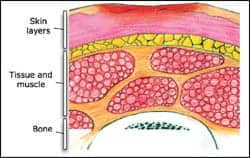The American College of Occupational and Environmental Medicine (ACOEM) has published new medical treatment guidelines for providing care to workers with chronic pain, comprising the latest chapter in Occupational Medicine Practice Guidelines, which is posted [removed]online[/removed]; in September a print version will be available.
More than 200 recommendations for chronic pain are outlined in the new evidence-based guidelines, which were developed by a multi-disciplinary panel of national experts and were reviewed by representatives of leading medical and health organizations. The recommendations focus on diagnostic and other testing and treatments for several chronic pain conditions, including: complex regional pain syndrome (CRPS), neuropathic pain, trigger points/myofascial pain, chronic persistent pain, fibromyalgia and chronic low back pain.
An extensive volume of literature was used to develop the recommendations, which feature more than 1,500 references, including 546 randomized-controlled trials.
Among the highlights:
• A detailed review of rehabilitation for delayed recovery, including biofeedback, work conditioning/work hardening/early intervention programs, and interdisciplinary pain-rehabilitation programs. • A focus on functional restoration, including an active exercise program and behavioral program. • A discussion of spinal-cord stimulation for CRPS and other painful conditions.
• An in-depth review of more than 20 medications (prescription, over-the-counter, complementary, and alternative) used to treat patients with chronic pain, with an appendix on guidance for the use of opioids.
• Detailed recommendations regarding the use of appliances, such as magnets; skilled allied-health provided medical therapies, such as acupuncture, manipulation/mobilization, myofascial release; electrical therapies, such as PENS and TENS.
• Uses and limitations of injection therapies, such as diagnostic and therapeutic facet joint injections, trigger/tender point injections, botulinum injections, and intrathecal drugs.
Orders are being accepted now for delivery in September of this comprehensive volume, which includes guidelines on a variety of musculoskeletal conditions. Individual chapters from the print publication are also available on the group’s Web site.
The ACOEM represents more than 5,000 physicians specializing in occupational and environmental medicine, and promotes the health of workers through preventive medicine, clinical care, disability management, research, and education.
[Source: Newswise]



